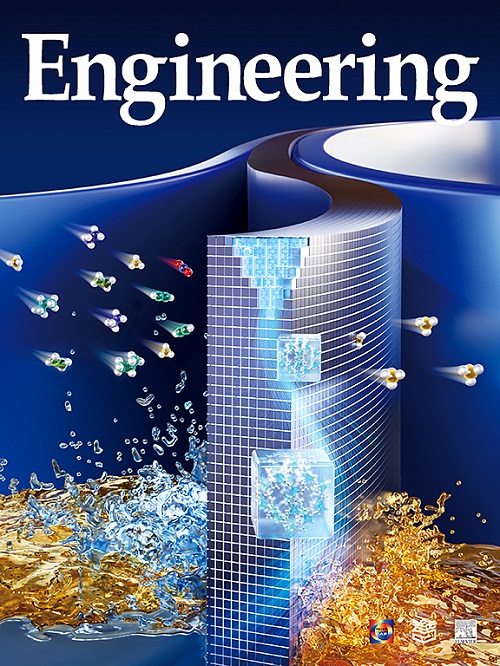Co-Benefits of Antimicrobial Resistance Mitigation from China’s PM2.5 Air Pollution Reduction Between 2014–2020
IF 10.1
1区 工程技术
Q1 ENGINEERING, MULTIDISCIPLINARY
引用次数: 0
Abstract
The One Health concept acknowledges the importance of multiple dimensions in controlling antimicrobial resistance (AMR). However, our understanding of how anthropological, socioeconomic, and environmental factors drive AMR at a national level remains limited. To explore associations between potential contributing factors and AMR, this study analyzed an extensive database comprising 13 major antibiotic-resistant bacteria and over 30 predictors (e.g., air pollution, antibiotic usage, economy, husbandry, public services, health services, education, diet, climate, and population) from 2014 to 2020 across China. The multivariate analysis results indicate that fine particulate matter with a diameter of 2.5 μm or less (PM2.5) is associated with AMR, accounting for 12% of the variation, followed by residents’ income (10.3%) and antibiotic usage density (5.1%). A reduction in PM2.5 of 1 µg·m−3 is linked to a 0.17% decrease in aggregate antibiotic resistance (p < 0.001, R2 = 0.74). Under different scenarios of China’s PM2.5 air-quality projections, we further estimated the premature death toll and economic burden derived from PM2.5-related antibiotic resistance in China until 2060. PM2.5-derived AMR is estimated to cause approximately 27 000 (95% confidence interval (CI): 646848 830) premature deaths and about 0.51 (95% CI; 0.12–0.92) million years of life lost annually in China, equivalent to an annual welfare loss of 8.4 (95%CI; 2.0–15.0) billion USD. Implementing the “Ambitious Pollution 1.5 °C Goals” scenario to reduce PM2.5 concentrations could prevent roughly 14 000 (95% CI; 3324–26 320) premature deaths—with a potential monetary value of 9.8 (95% CI; 2.2–17.6) billion USD—from AMR by 2060. These results suggest that reducing air pollution may offer co-benefits in the health and economic sectors by mitigating AMR.
求助全文
约1分钟内获得全文
求助全文
来源期刊

Engineering
Environmental Science-Environmental Engineering
自引率
1.60%
发文量
335
审稿时长
35 days
期刊介绍:
Engineering, an international open-access journal initiated by the Chinese Academy of Engineering (CAE) in 2015, serves as a distinguished platform for disseminating cutting-edge advancements in engineering R&D, sharing major research outputs, and highlighting key achievements worldwide. The journal's objectives encompass reporting progress in engineering science, fostering discussions on hot topics, addressing areas of interest, challenges, and prospects in engineering development, while considering human and environmental well-being and ethics in engineering. It aims to inspire breakthroughs and innovations with profound economic and social significance, propelling them to advanced international standards and transforming them into a new productive force. Ultimately, this endeavor seeks to bring about positive changes globally, benefit humanity, and shape a new future.
 求助内容:
求助内容: 应助结果提醒方式:
应助结果提醒方式:


